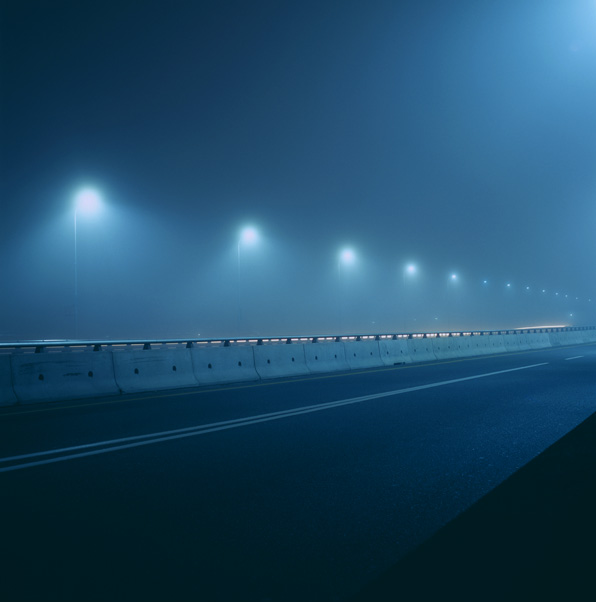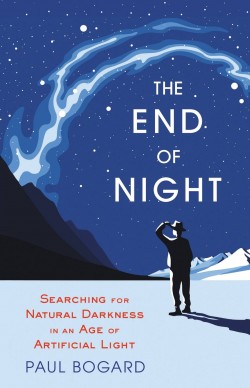
As a child growing up among the lakes and forests of Minnesota in the 1970s, the night sky made a big impression on Paul Bogard. This was the era of “real nights”, when the Milky Way glowed above the earth, an awe-inspiring streak made up of countless other worlds, at once reminding us of our insignificance and connecting us to a larger and unknown beyond.
Sadly, this view is fading. It’s estimated that two-thirds of Americans and Europeans no longer experience real night—real darkness, in other words—and nearly all live in areas polluted to some extent by light.
“Authentic views of the night sky are quickly being replaced by a great yellow sky full of electric lights, a phenomenon astronomers call sky glow”, says Bogard, who teaches creative nonfiction at James Madison University in Harrisonburg, Virginia. This idea has inspired him—and worried him—for a long time.
In 2008, Bogard compiled and edited Let There be Night: Testimony on Behalf of the Dark, an anthology of twenty-eight essays on the value of night, written by scientists, scholars, and poets. These writers address their personal experiences of night as well as their fears about what we are losing as the nocturnal wilderness above us disappears.
 In a new book on the subject, The End of Night: Searching for Darkness in an Age of Artificial Light, released by Little, Brown next week, Bogard undertakes the journey on his own, crisscrossing North America and Europe in a quest to understand the many dimensions of light pollution.
In a new book on the subject, The End of Night: Searching for Darkness in an Age of Artificial Light, released by Little, Brown next week, Bogard undertakes the journey on his own, crisscrossing North America and Europe in a quest to understand the many dimensions of light pollution.
Historically, of course, light pollution is a recent phenomenon. Before the advent of artificial light, nights were governed by the seasons, and our body rhythms were aligned with them. In only a few short centuries, things have changed dramatically. Epidemiologists have connected illuminated nights with increased rates of cancer. And environmentalists have identified light pollution as a factor endangering biodiversity, since wildlife can be unnaturally confused by, attracted to, or repelled by artificial light sources.
However, while the physical and environmental effects of light pollution on the earth’s inhabitants fascinate Bogard, he is also deeply concerned about the spiritual aspects of the loss of night. On his journey he encounters a minister who preaches “the necessity of the unknown”, and who believes his role in the community is not merely to suggest the possibility of the sacred in people’s lives, but also to “maintain the dimension of ambiguity or of the question—the essential character of doubt.” Night’s power to humble us is a power that will be missed.
Bogard’s engagement with the diminishing night sky has been lifelong. In addition to experiencing those glorious childhood nights in Minnesota, as a teenager he began to learn about the stars. “Looking for constellations quickly teaches you about light pollution,” he says.
He went on to study religion as an undergraduate and became acquainted with the wide range of myths and stories that all human cultures have projected onto the heavens. Later, with a PhD in Literature & Environment, Bogard began to research the human experience of darkness, how it has shaped us physically, culturally, and socially. As an author, Bogard works within the American tradition of nature writing, which includes such luminaries as Henry David Thoreau and the Scottish-born naturalist John Muir, as well as more recent thinkers like Wendell Berry and Michael Pollan.
In the way of all truly interesting writing, The End of Night defies categorization—it’s part environmental history, part social history, part literary history, and part travelogue. To gather his research, Bogard visited over twenty places, not only charting the influence of artificial light in the Western world over the past few centuries but discovering in our own time the places with the brightest nights (Las Vegas, perhaps unsurprisingly) and those with the darkest (nearby Death Valley).
“We have consistently exported artificial light to the rest of the earth,” Bogard says, “colonising the night everywhere we go, imposing our brand of nocturnal imperialism on others.”
Bogard’s extended journey has led him to speak with scientists, physicians, activists, and writers. With them, his goal is to raise awareness of the value of darkness and the threats from light pollution. But while The End of Night addresses these urgent issues, it also transcends them. Throughout, Bogard’s passion for poetry and literature shine through, as does his appreciation for “the necessity of the unknown”, the wonder that real nights give us, and the mystery of darkness.

